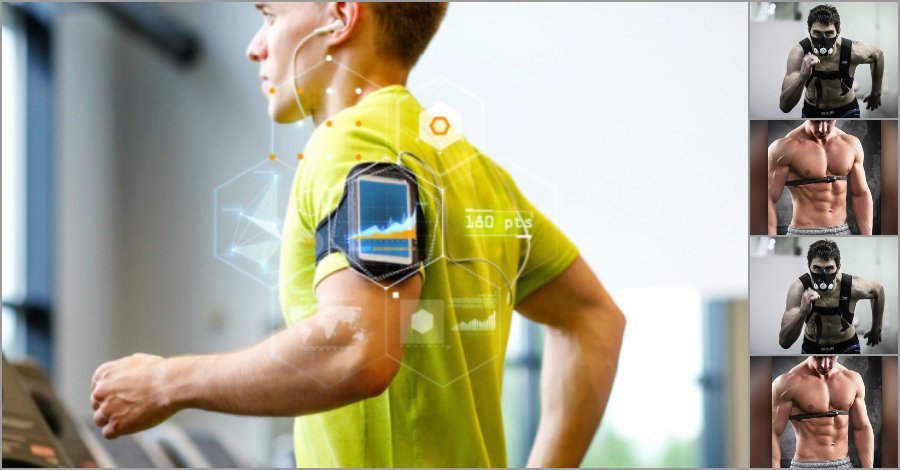We try our best to have a regular workout regimen and maintain a fit lifestyle. But even the most avid exercisers fall victim to scam products claiming to make them more fit in a shorter span of time. What the heck has happened to our fitness culture over the past decade?
The explosion of “helpful” smart technology has trickled its way into the once simple and results-based process of staying fit. In today’s gyms, you can’t help but notice the mind-numbing trends and distractions in the hands of so many lifters.
There are four big offenders that need to be eradicated from gyms, or at least used correctly.
Activity Tracker:
Today, there are tons of different wearable devices that will monitor how much you move and estimate how many calories you burn. Sure, the idea of moving more and eating less is a great starting point. But if a plastic bracelet is a difference between a person taking action to get healthy versus them wasting away into physical demise, maybe the “activity tracking thing” isn’t the issue.
![]()
Even with all the high-stakes corporate funding being used to develop the next “breakthrough” fitness tool, there have been multiple studies looking at the accuracy and effectiveness of these tools.
So all those wasting away dozens of hours each week on the elliptical and stationary bike may be the ones getting screwed over the most by devices that underestimate caloric expenditure due to low levels of relative bodily movement. That band on your wrist doesn’t know how fast your feet are peddling when your arms are gripping the handlebars and haven’t moved for 45 minutes.
Heart Rate Monitors:
The HRV itself isn’t the problem. It’s the well-meaning but misguided consumer that turns a hugely actionable tool like HRV into a way to self-justify not training hard or, for some, not training at all. HRV monitoring is a way to track your body’s daily stress metrics through an advanced methodology that can monitor, record, and interpret changes in your heart’s rhythms and rates.
After administering the daily check-up, the system will rate your level of physical preparedness using traffic light sequencing: Red meaning to stop or avoid activity, yellow meaning you should modify the plan and train with caution, and green meaning to go all-out.

Many elite athletes do successfully use HRV to learn more about their body’s recovery mechanisms and fine-tune their approach to training, but that’s exactly the issue. It’s an advanced tool meant for elite athletes, not necessarily for the general public searching for quick fitness answers or shortcuts.
The last thing we need is to give someone who already has motivation issues another reason not to hit the gym that day or not push their intensity to the necessary levels.
Altitude Simulator Masks:
Isn’t the simple act of breathing already hard enough when you’re seriously pushing the limits of your training without strapping a mask to your face that makes you breathe through a half-clogged garden hose?
While the oxygen deprivation mask isn’t truly “cyber” technology, it makes the list of the damage it can do to the cardiovascular system and actual breathing mechanics. It’s actually difficult to correlate studies that evaluated the efficacy of various forms of hypoxic training such as high elevation and closed chamber, oxygen-deprived rooms.

The research is spotty on specifically using an oxygen deprivation mask itself, and it wouldn’t do any good to make ballpark comparisons with this style of training. The mask truly should stand alone in its stupidity.
With all the oxygen deprivation mask’s shortcomings, there was actually one meta-analysis that actually showed that training in an oxygen-deprived environment may have the ability to reduce waist circumference and effectively reduce arterial stiffness.
Smartphone & Fitness Apps:
The smartphone revolution has taken its toll on the fitness community — from the multitude of misguided fitness apps that put you through worthless cookie-cutter workouts to impromptu Facetime calls mid-set on the ab machine. The “smart” phone has dumbed down many peoples’ workouts.

You could try to argue that downloading free training apps is better than going to the gym without any plan at all, but let’s get real. If a generic and randomized workout written by a highly unqualified computer programmer is your version of “good training,” you’ve got even bigger issues to address.
Training takes focus, passion, and effort. Training takes the ability to define your goals and match them with your actions on a consistent basis. None of these things involve your phone. Well, unless you want to tweet about your passions.

